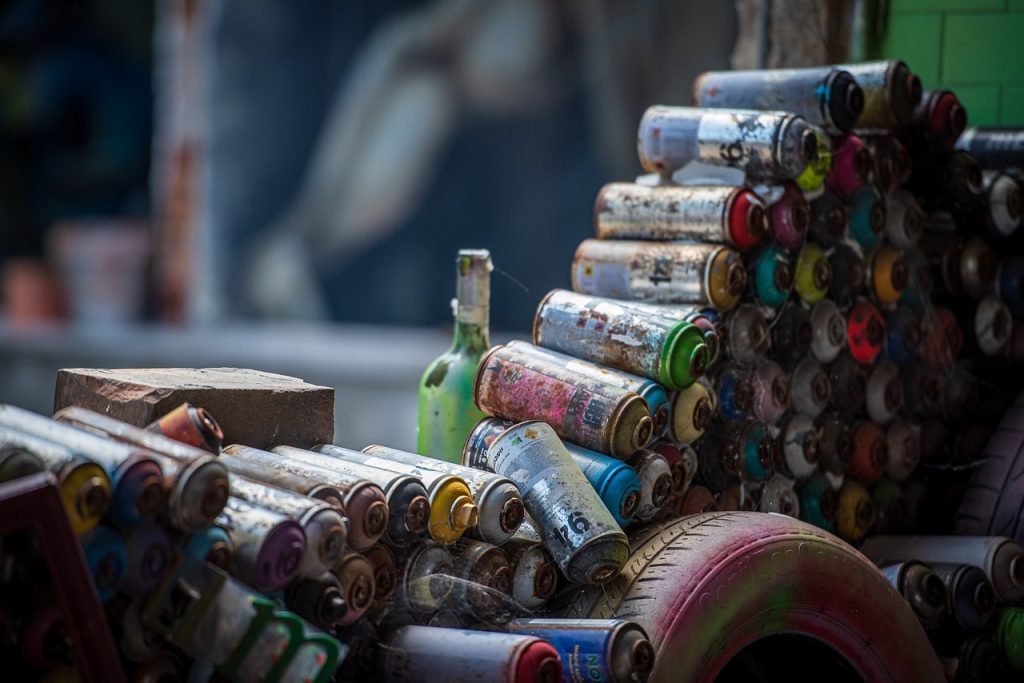- Check with local waste facilities for guidance and special rules.
- Attend specific collection events run by environmental departments.
- Recycle latex and water-based paint into new, high-quality paint.
- For leftover water-based paint, mix with cat litter, let dry, and dispose of in regular trash (not applicable to oil-based paint).
- Engage with dedicated paint recycling programs for businesses.
- Plan and estimate before buying paint to reduce waste.
- Clean up after painting and consult local waste facilities for disposal of paintbrushes and rollers.
- For oil-based paint, access local hazardous waste recycling programs.
- Ensure oil-based paint is usable when dropping it off and seal containers tightly.
- For small amounts of leftover oil-based paint, let it dry in a well-ventilated area before disposal.
- Dispose of oil-based paint at household hazardous waste collection sites.
How to Properly Recycle and Dispose of Oil-Based and Latex Paint
Ever wonder how to properly recycle and dispose of leftover paint from home renovation projects or craft sessions? Fortunately, there are ways to recycle paint, and programs throughout public services to help. From oil-based paint to latex paint, and even water-based paint, different types of paints require different recycling procedures and disposal methods.
Regardless of the type of paint, the first step is to check with local waste facilities. They can guide you through the process and make you aware of any special rules. Some locations even have specific collection events. Usually, environmental departments run these collection events as a part of their waste program or even offer regular recycling services. Oil-based paints, in particular, are considered hazardous waste. Hence, you must dispose of them following the regional hazardous waste disposal regulations.
In certain areas, latex and water-based paint can frequently be recycled into new, high-quality paint. This recycled paint is often donated to public-facing organizations such as non-profits and local government departments. Not only does this promote the benefits of recycling, but it also adds an extra layer of environmental responsibility for businesses.
If you’re unable to recycle paint using public services, you can actually do it yourself. Any leftover water-based paint can be mixed with cat litter, left to dry, and then disposed of in your regular trash. Again, remember this method isn’t applicable to oil-based paint due to its hazardous nature. You must deal with hazardous materials responsibly and according to your local authorities’ guidelines, so keep this in mind when planning your paint recycling project.
There are dedicated paint recycling programs that cater to businesses. Let’s say you have a painting business and you end up with surplus paint after a project. These programs provide you with an environmentally friendly solution. They specialize in dealing with large quantities of paints and follow strict environmental regulations for disposal and recycling.
Ultimately, the most environmentally friendly option is to try to reduce the amount of waste paint being produced. This can be done through careful planning and estimation before buying paint for your project. Not only does this constitute a responsible business or home practice, but it also saves you from unnecessary spending. It’s a win-win when you think about it!
Don’t forget that cleaning up after painting is crucial. Used paintbrushes and rollers shouldn’t be discarded as regular waste. Many of your local waste facilities provide resources and collection options for these items as well, so reach out to them for guidance.
All in all, remember that it’s us, the public, who benefit from the effort we put into recycling. The environmental impact isn’t insignificant, either. The very act of recycling cuts down on the creation of new paints and the materials they demand, which in turn reduces the strain on our planet. Paint recycling is more than just conveniently getting rid of what you no longer need – it’s taking a conscious step towards better, cleaner business practices, and a healthier environment that we all benefit from.
Efficient Recycling Tips for Oil-Based Paint
Recycling oil-based paint is an effective way to contribute positively to the environment and your community. It’s significant to acknowledge that leftover paint can be a real problem if it’s not disposed of correctly. It’s hazardous, potentially harmful to water systems, and the environment if not handled properly. Therefore, adopting some efficient recycling tips for oil-based paint in your daily life can make a big difference. Here’s how you can recycle paint properly.
Initially, it’s necessary to understand how to segregate paint. Not all paint can be recycled the same way. Typically, oil-based paint is treated differently when it comes to recycling. It’s not advisable to simply throw leftover oil-based paint into your weekly recycling or waste collection. Due to the inherent characteristics of oil-based paints, they’re considered hazardous waste and require special attention.
Instead, you should access your local waste or hazardous waste recycling program. Many public services are available, including California’s PaintCare initiative. PaintCare is an excellent example of a paint stewardship program designed to ease the paint recycling process and prevent paint waste. In this program, you can drop-off your leftover paint at multiple collection sites. Take advantage of such programs to ensure you follow an environmentally friendly disposal method that will help you get rid of paint in a proper way. It’s open to both public and businesses, allowing everyone to actively participate in protecting our environment.
Check to see if your local public works department provides this type of paint collection program. If not, there are other ways to recycle paint. A few businesses and property managers offer paint recycling services for their customers. In addition, neighboring environmental organizations or nature park management typically host seasonal or regular drop-off events. During these drop-ins, leftover paint is collected, sorted, and then either reused in community projects, remade into recycled paint, or disposed of safely.
Another tip to note is to always ensure the oil-based paint usable when you drop it off. Seal all containers tightly to prevent the paint from drying out. In the event you’ve used a significant amount of paint, but there’s still a little lingering at the bottom, you should leave it open in a well-ventilated area until it dries before disposal. Even little amounts count in recycling and surely any leftover paint amounts can form part of the postconsumer paint recycling process. After all, any amount of paint that can be saved from ending up in a landfill or contaminating water systems is a valuable contribution to a cleaner environment and public health.
Another location to get rid of leftover paint is at a household hazardous waste collection site. These sites are often run by the city or county and are equipped to handle waste like oil-based paint. You can find your nearest collection site by checking with your local waste management agency or by conducting an online search. In addition, the superior court grants or sanctions approved oil-based paint disposal sites.
Overall, as a responsible citizen, it’s important to manage waste, especially when dealing with substances like oil-based paint, responsibly. Just by simply following the tips in this guide to recycle paint, you’re taking a step towards a greener future, significantly reducing the negative impact such waste can have on nature. It’s a great step for your public image and an even better step for our environment. Remember, your actions count and contribute to a healthier and more sustainable environment. Together, let’s aim for a cleaner future.




